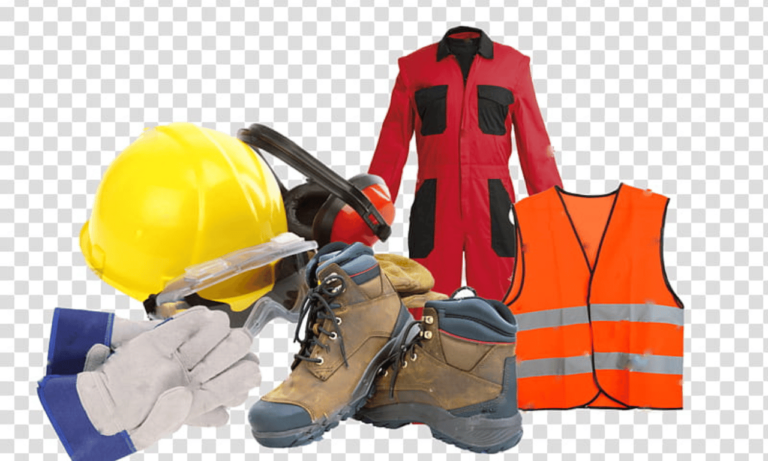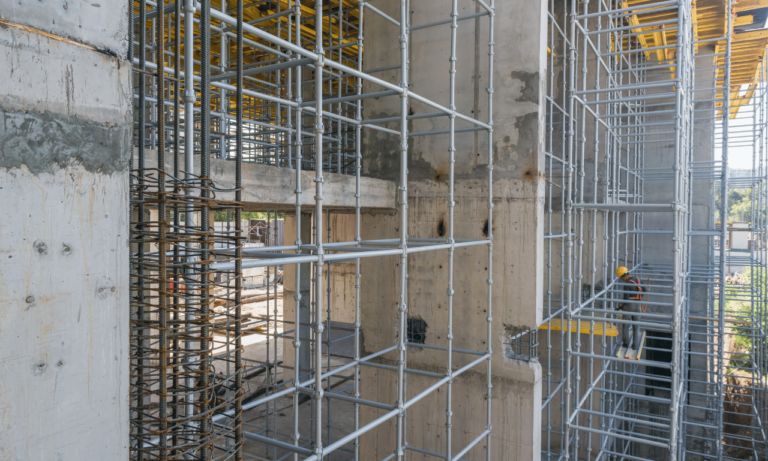Phone:
(+65)8319-0742
As work environments change, the focus on occupational health and safety (OHS) grows. It’s crucial for businesses to keep workers safe and healthy. This includes looking at risks in places like construction sites and offices.
Legislation like the Occupational Safety and Health Act of 1970 in the U.S. sets clear OHS standards. Around the world, laws protect workers and help them stay healthy and safe at work.
These laws support occupational safety training and programs to manage risks. Employee wellness programs also play a big part. They aim to lower work-related injuries and make health and safety a top priority.
For those interested in OHS, the Essential Guide to Occupational Health and Safety series is a great resource. It covers topics from auditing to safety laws. It also links to useful resources, like the guide on scaffolding safety.
Key Takeaways
- Occupational health and safety is key to protecting workers and boosting productivity.
- Good OHS policies can save money and improve a company’s image.
- Teaching employees about safety is vital for a strong OHS program.
- Regular checks for hazards help manage risks at work.
- Legislation like OSHA sets the standard for workplace safety.
- The Essential Guide to Occupational Health and Safety series offers deep insights on OHS topics.
- International laws highlight the global need for strong occupational health strategies.
Understanding the Fundamentals of Occupational Health and Safety
Occupational health and safety (OHS) focuses on creating a safe and healthy work environment. This is key for boosting business productivity and protecting workers. It includes practices like industrial hygiene, occupational hazards prevention, and following global safety standards and ohs regulations. This makes it a vital area for ongoing improvement.
Looking into the ILO’s core text on OHS helps us grasp this better. It shows how OHS practices have evolved. These changes are vital for protecting workers from workplace dangers. It also highlights how OHS must adapt to global economic and tech changes. This makes it crucial for effective safety policies and employee well-being programs.
The Significance of OHS in the Workplace
OHS is crucial for preventing work-related injuries and illnesses. Every year, around 2 million deaths and 160 million new cases of job-related illnesses show the need for strong safety measures. These efforts go beyond just following rules. They focus on creating a work environment that values worker health, prevents diseases, and manages stress and overwork.
Global Perspectives: OHS Practices Around the World
Global OHS practices differ a lot. In the United States, the United Kingdom, and Canada, for example, there are detailed laws and agencies like OSHA and HSE. These ensure workplaces are safe and protect workers’ health. This shows why high OHS standards are important worldwide.
Almost 80% of ILO standards deal with occupational safety and health. This shows a global effort to improve these standards. Countries are urged to make OHS a top priority through tools like the ILO Convention No. 187. This convention promotes a systematic approach to building a safety culture at work.
These principles and their global applications highlight the complexity and wide scope of managing occupational health and safety. Businesses and governments must work together. They need to focus on worker well-being and set new OHS standards.
Comprehensive Occupational Health and Safety Policies
In today’s world, having strict occupational health guidelines and safety protocols is a must. Not following work safety standards can harm people’s health and hurt a company’s work. Employers know how important health and safety policies are to protect workers and keep the business running smoothly.
Some companies are great at following health and safety rules. They keep their policies up to date, like the February 2019 version. This includes rules for safe debris management with scaffold chutes and other safety steps. These policies make it clear who does what, from top bosses to every worker, making sure everyone knows their part.
- Continuous Training and Education: Companies like Whitestone REIT offer ongoing training. This makes sure everyone knows the safety protocols they need for their job.
- Rights and Responsibilities: The Occupational Health and Safety Act gives workers the right to know about dangers at work and how to handle them.
- Preventive Measures: These policies have strict rules for managing risks. They spot dangers and take steps to lessen the risks to health, mission, or property.
- Emergency Readiness: Companies like Whitestone REIT do regular drills and emergency plans. This gets the team ready for sudden problems.
- Recognition and Enforcement: Rewarding safe behavior and taking action against those who don’t follow the rules can boost morale and productivity.
Having strong and changing occupational health guidelines creates a safety-focused culture. This approach not only keeps workers safe but also helps a company last longer and do better. It makes sure everyone works together to keep the workplace safe, reducing the chances of getting hurt or sick at work.
With everyone working together and strong policies, businesses can make a safer, healthier place to work. This helps them grow and keeps employees happy and well.
Occupational Hazards Prevention and Management
In today’s workplaces, managing occupational hazards is key. It’s not just about following rules, but also about keeping businesses strong. Employers and safety managers must identify and assess risks to keep workers safe.
Identifying Common Workplace Hazards
Knowing what hazards are in the workplace is crucial for safety. These hazards can be physical, chemical, biological, or ergonomic. Each type needs its own plan for spotting and handling risks. For example, in factories, physical hazards might be dangerous machines or slippery floors. Chemical hazards could be toxic substances.
Sorting out these risks helps in making safety plans clearer and more effective. OSHA says that spotting risks early can prevent injuries or worse.
Strategies for Hazard Prevention and Control
After finding hazards, it’s important to take action. Companies must follow safety rules and make plans to reduce risks. These plans can include engineering controls, rules, and personal protective equipment (PPE). Here’s a table showing how different hazards can be controlled:
| Hazard Type | Control Strategy | Examples |
|---|---|---|
| Physical | Engineering Controls | Machine guards, Soundproofing |
| Chemical | Use of PPE | Gloves, Goggles, Respirators |
| Biological | Administrative Controls | Sanitation, Exposure Control Plan |
| Ergonomic | Training and Awareness | Ergonomics Training, Workspace Redesign |
These strategies need to be checked and updated regularly. Tools like the risk assessment matrix and FMEA help figure out and tackle the biggest risks first.
Good hazard prevention means always looking for ways to get better. It involves listening to everyone in the company and keeping up with new safety methods and tech.
Importance of Employee Well-Being Programs
Today, companies see how big of an impact employee wellness programs have on occupational health and safety. These programs help with physical health and also boost mental and emotional well-being. They make workplace ergonomics better. Good wellness programs cut healthcare costs, make employees happier, and increase productivity.
Mental and Emotional Health in the Workplace
Mental and emotional health is key in wellness programs. By tackling work stress and creating a supportive work place, companies make employees happier and more productive. This helps the company do better and keeps employees around longer.
Physical Wellness Initiatives for Employees
Physical health programs focus on making the workplace better and encouraging healthy habits. They include things like ergonomic checks and exercise programs. These efforts help lower the chance of work injuries and long-term health problems, keeping the workforce healthy and effective.
Here are some stats on how wellness programs help:
| Company | Program Impact | ROI |
|---|---|---|
| Johnson & Johnson | Significant reduction in smoking, high blood pressure, and physical inactivity among employees | $2.71 for every dollar spent from 2002 to 2008 |
| General ROI | Enhanced workplace performance and reduced health risks | Up to 6 to 1 |
| Johnson & Johnson (10-year span) | $250 million saved in healthcare costs | Data not specified |
Leaders need to create a culture that values health and well-being. When top leaders support wellness programs, more employees join in. It’s not just about signing up but staying involved for the best results.
In the end, employee wellness programs have a big effect on occupational health and safety. They cut healthcare costs, boost employee engagement, and create a supportive work environment. Companies that want to stay ahead should invest in wellness programs that cover both physical and mental health.
Implementing Effective Safety Training Programs
Safety training is key to keeping the workplace safe. It aims to lower the risk of injuries and build a safety-first culture. Employees learn the skills and knowledge needed to prevent accidents and keep the workplace safe.
The Occupational Safety and Health Act of 1970 makes it clear that a safe work environment means ongoing health and safety training. Not following these rules can lead to big legal and financial problems for companies. Investing in safety training can also cut down on costs by reducing accidents and downtime.
- Increasing operational efficiency
- Reducing employee leaves of absence
- Promoting a positive safety culture within the company
There are many ways to teach workplace safety measures, from toolbox talks to formal training. Keeping safety rules up to date and reminding employees is key. Using real-world examples in training helps people remember and follow safety rules better.
- Identifying and communicating known hazards
- Teaching safe handling of equipment and materials
- Ensuring employees understand emergency procedures and hazard controls
- Regularly assessing job-specific safety protocols
Adding feedback to safety training makes it more relevant and effective. Changing training based on what employees say helps make it better. This approach is linked to lower insurance costs because of fewer risks.
When safety is a shared goal between leaders and workers, it leads to fewer injuries and a healthier workplace. Keeping track of safety efforts shows you’re serious and follows best practices seen in top companies around the world.
Developing a Safety Culture within the Organization
To build a safety culture, we must blend systematic health and safety practices with strong leadership and active employee involvement. When safety is a core value, it cuts down on accidents and makes workers happier.
The Role of Leadership in Safety
Leaders are key to a safety culture. They must live by safety rules and push safety efforts. Training leaders at all levels is crucial to spread a safety mindset across the company.
Studies show that strong leadership leads to fewer accidents and happier workers. This shows how important it is to invest in leaders.
Encouraging Employee Participation in Safety Measures
Getting employees involved is vital. Everyone, from the ground floor to the top, must play a part in keeping the workplace safe. It’s important to create a space where workers can speak up about safety issues and take part in training.
Companies like Alcoa have seen big safety gains by letting employees help make safety decisions. They’ve made safety a team effort.
Training leaders in skills like communication and building supportive teams helps workers become safety leaders. This makes a big difference in safety.
By doing these things, safety becomes a team effort. This approach boosts safety standards and creates a safe place for everyone to work.
Adhering to Occupational Health Regulations and Compliance
In today’s world, following ohs regulations and ensuring osha compliance is key. It keeps the workplace safe and legal. It also protects employees and companies. This means doing things like risk assessments, keeping records, training, and following safety rules.
Navigating OSHA Regulations and Compliance
It’s important for companies to know and follow OSHA rules. This helps avoid legal trouble and keeps the workplace safe. Companies need a good OSH policy, train employees on safety, and report accidents fast.
Workplace deaths must be reported within 8 hours, and serious injuries in 24 hours. If there are dangerous chemicals, you need a plan to tell workers how to handle them safely.
Understanding Local and International OHS Laws
OSHA sets safety rules in the U.S., but knowing global standards like the ILO-OSH 2001 is also key for companies that work across borders. This means having a safety plan that everyone knows about, with clear rules for who does what in an emergency.
It’s important to follow local laws wherever you work to keep things running smoothly around the world.
| Requirement | Details |
|---|---|
| OSH Policy | Must be written and communicated to all workers. |
| Training Frequency | All workers must receive regular safety training, reviewed periodically. |
| Record Keeping | Mandatory logs of work-related injuries and illnesses; accessible to employees and their representatives. |
| International Compliance | Adhere to both local and international laws, including ILO-OSH 2001 guidelines for management systems. |
| Hazard Reporting | Immediate reporting of work-area accidents and near-misses; strict deadlines for abatement verification. |
Following osha compliance, understanding ohs regulations, and using strong industrial safety measures is crucial. It helps create a workplace that values employee health and safety. This approach reduces risks and makes the company more credible and efficient.
Occupational Safety Training and Education
Starting a strong occupational safety training plan is key to a safe work place. It means having a clear plan for workplace safety education. This includes training new hires and keeping up with the latest safety rules.
Onboarding and Continuous Training for Staff
Getting new hires ready is crucial. It means teaching them the basics of safety training programs. Keeping up with new safety rules is also vital, so everyone stays safe.
Customizing Training Programs to Industry Needs
It’s important to tailor safety training programs to different work areas. This makes sure the training fits the specific dangers and needs of each job. It makes the occupational safety training more effective.
Here are some benefits and options for occupational safety training and related courses:
| Feature | Description |
|---|---|
| Access to Materials | Free access to course materials for Occupational Safety Training |
| Discount Offers | Exclusive business discounts for Safety & Health Training and special rates for US Armed Forces veterans |
| Certification | Certificates available in digital and print formats post-training completion |
| Partnership Benefits | OSHAcademy offers a 10% tuition discount and scholarship opportunities through its partnership with Columbia Southern University |
| Testimonials | High praise for the 132-hour Occupational Safety and Health Professional program, particularly for manufacturing sector safety culture enhancement |
| Course Variety | Diverse programs available incorporating essential topics such as Personal Protective Equipment, Stairway and Ladder Safety, and HIPAA Privacy Training |
| Certificate Packages | Option to purchase a package including detailed exam scores, official transcripts, and certificates |
| Training Convenience | Online training platform with self-paced learning options for greater accessibility and convenience |
Utilizing Technology for Workplace Injury Prevention
Today, making workplaces safer is a top priority. Advanced technologies are key in changing how we handle safety. By using the latest safety monitoring systems and risk assessment tools, companies are setting new safety standards.
Tools for Risk Assessment and Incident Reporting
Managing incidents and identifying risks is crucial to cut down on workplace injuries. With incident reporting technology, companies can quickly record and analyze accident data. This gives them the insights they need to prevent future accidents. Tools like SafetyCulture make these processes easier, making sure all data is well-kept and easy to find.
Advancements in Safety Monitoring and Response Systems
New tech in safety monitoring has greatly. It helps track what’s happening in real-time and can spot dangers before they happen. With AI-driven cameras and sensors, companies can keep a close watch on their work areas. This has made workplaces much safer.
AI is also being used to check if workers are wearing their safety gear correctly. Video AI from companies like ISS uses deep learning to make sure everyone follows safety rules. This reduces the chance of getting hurt because of not following safety rules.
Studies have shown that these technologies work well. They use deep learning to spot dangers in different places, like building sites or factories.
| Feature | Benefit |
|---|---|
| Real-time data collection | Enables immediate response and intervention |
| AI-driven risk analysis | Predicts and mitigates potential threats |
| Automated compliance monitoring | Ensures adherence to safety regulations |
This mix of risk assessment tools and safety monitoring tech makes handling incidents better. It also raises safety levels, making workplaces safer for everyone. As safety needs change, these tech tools are key to preventing injuries.
Occupational Health and Safety
Occupational health and safety (OHS) is key to a business’s success and a healthy work life. Agencies like Cal/OSHA set strict rules. These rules push businesses to follow best practices. This makes the workplace safer and improves employee health.
Adding OHS steps cuts down on accidents at work. It also helps businesses do better overall. For tips on making your workplace safer, check out the Division of Occupational Safety and Health.
Assessing the Impact of OHS on Business Performance
Companies that focus on OHS see fewer workers’ comp claims. This lowers costs. Injuries and diseases at work cost the world nearly four percent of its GDP each year. But, good OHS practices can make workers more productive and lower insurance costs.
Best Practices for Ensuring a Healthy Work Environment
To keep the workplace healthy, it’s important to check for risks and train employees. Getting workers involved in safety efforts helps spot dangers and builds a safety-first culture. Good OHS plans fit the needs of each workplace, tackling all possible risks.
| Year | Workplace Fatalities | Workplace Injuries |
|---|---|---|
| 1990 | 6,217 | 5.3 Million |
| 2000 | 5,915 | 4.7 Million |
| 2010 | 4,690 | 3.9 Million |
| 2020 | 4,764 | 2.7 Million |
Over the years, strict rules and safety efforts have lowered accident and death rates. This is true even as more people work. These steps protect workers and save money by reducing injuries and diseases at work.
Keeping the workplace safe and productive is a constant effort. It changes with new risks and technology. By following safety rules and starting new safety projects, businesses can lead in OHS. This helps them perform better and stand out in their field.
Conclusion
Occupational Health and Safety (OHS) is key to a successful business. It makes sure safety steps and employee well-being go hand in hand. Standards like ISO 45001 push for a detailed way to handle workplace risks.
A strong workship safety plan lowers risks and shows a company cares about its workers’ health and safety. Following safe practices means being ready, aware, and aiming for top safety culture.
Meetings like the Tripartite Sectoral Meeting show that every job setting has its own challenges. Quick healthcare, fair work hours, and careful risk checks are vital. They affect not just one person but whole communities.
The Golden Hour after an accident is critical and needs quick, effective medical help. This highlights the need for good occupational health care services available. Training worker health and safety reps helps make sure OHS policies meet workers’ needs.
In conclusion, combining good laws, active employer support, and a knowledgeable workforce creates a place where safety comes naturally. This approach improves health and safety standards and helps businesses grow and look better. We must keep a strong focus on OHS, working together to make a safe and healthy work world. Every step we take is a step towards a better, safer future.






















